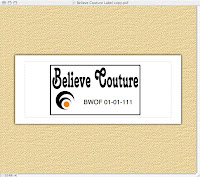
I had fun with this outfit. I'm usually a rule follower rather than a rule bender and I'm usually reluctant to stray from the written directions. Not only did I
not follow the directions to the letter, but I had to mix and match various pieces from various BWOF issues in order to achieve the look I wanted. With this outfit, I discovered how much fun it is to put my own stamp on my projects.
The tunic: BWOF
01/08 #130B. This top called for an invisible zipper in the side. I didn't feel like taking the extra time to match up the seams, so I eliminated the zipper. Thanks to the neckline slit that goes all the way down to my sternum, there was plenty of room to put the top over my head without the zipper. The low neckline also made it necessary to wear some kind of top under the tunic. Even the BWOF editors recommended a tank top "for modesty's sake" and we all know how BWOF feels about modesty!

The top:
04/05 #133B. This was a very simple top. I sewed it in an afternoon. I made a few changes in applying the binding. The first written direction given was to cut off the seam allowance. I didn't see the logic in adding and cutting on a seam allowance only to cut it off again. So I didn't add a seam allowance to the neckline or armhole. In preparing the binding strips, Burda instructs us to fold the binding strip lengthwise and press; open the strip out flat; press one long edge in to the center crease. Knits don't really hold a crease so I chose to use a single layer binding, which is applied like a Hong Kong finish. I felt the binding would have been too thick (three layers) if I'd used the method described.

The skirt:
05/06 #133 This may end up being my favorite skirt pattern. I've made it once before and I'm sure I'll make it again. It's a simple A-line with a side zipper and elastic in the back waistband. I didn't feel like fiddling with an invisible zipper in the tunic, but I had no choice in the skirt. I have much better luck with invisible zippers when I baste them in. Unfortunately, I'm not always in the mood to baste even though I know how important basting is.
I mixed pieces. I didn't follow directions. For an order-loving, anal retentive like me, this outfit represents anarchy! You won't know it to look at me, but I'll be walking on the wild side every time I wear this outfit!
 (The title, of course, is tongue in cheek.)
(The title, of course, is tongue in cheek.)



























